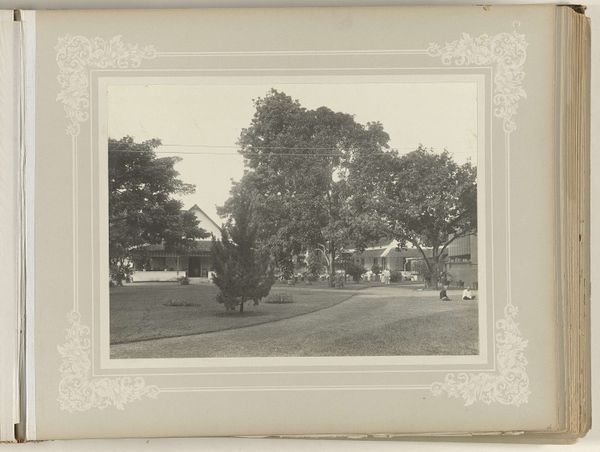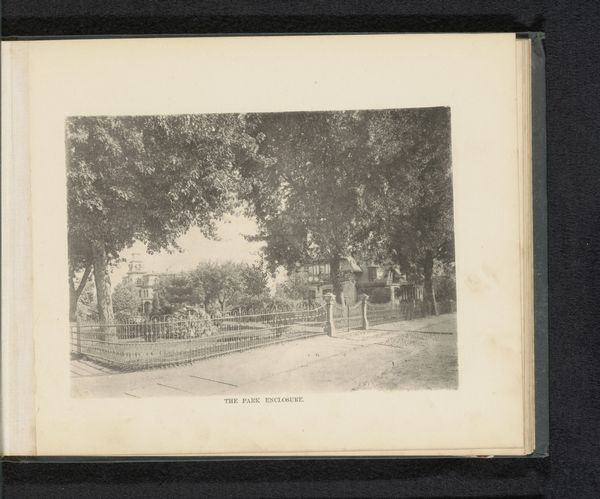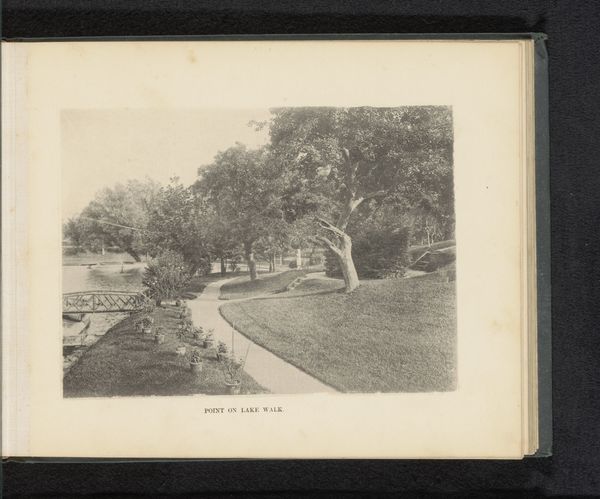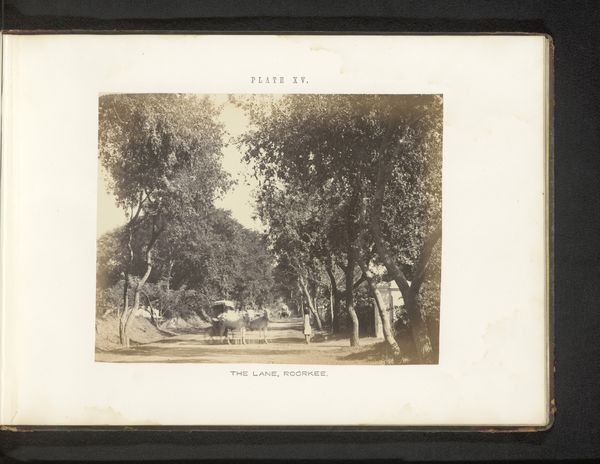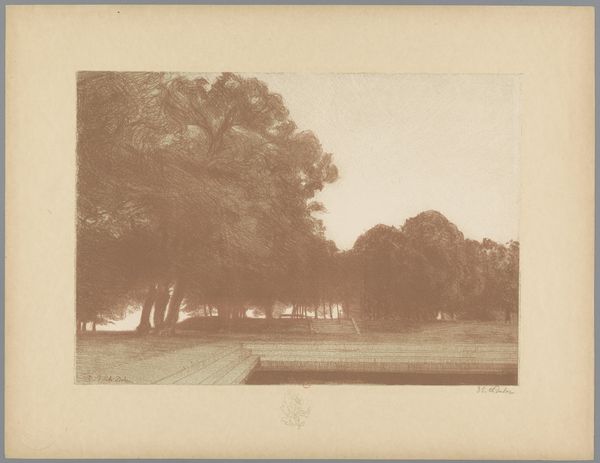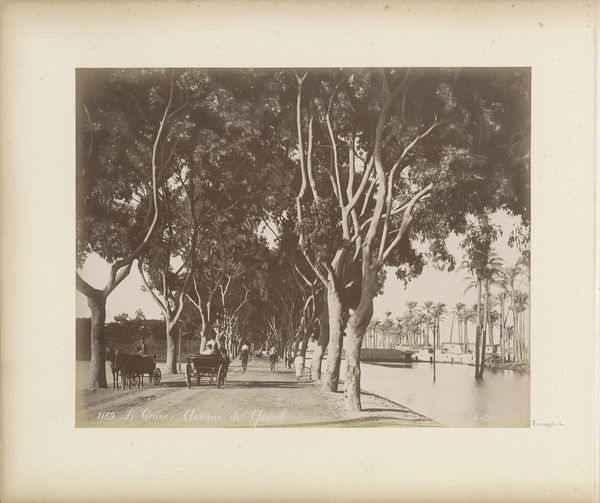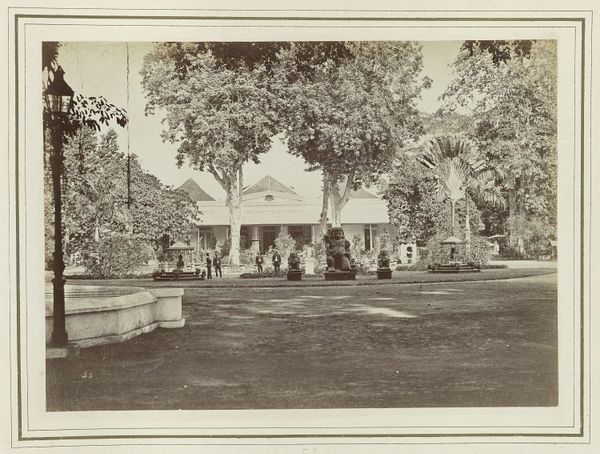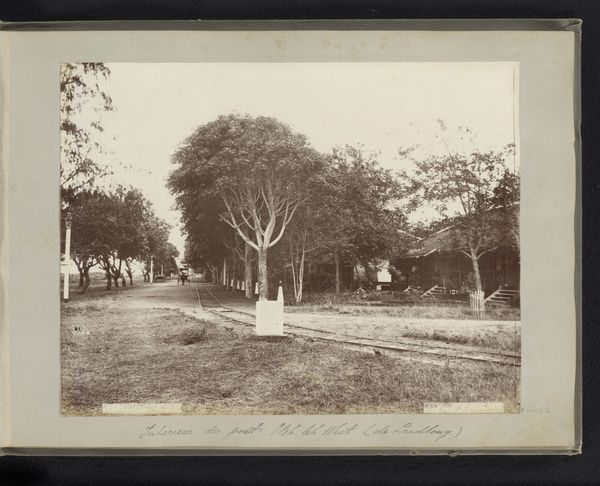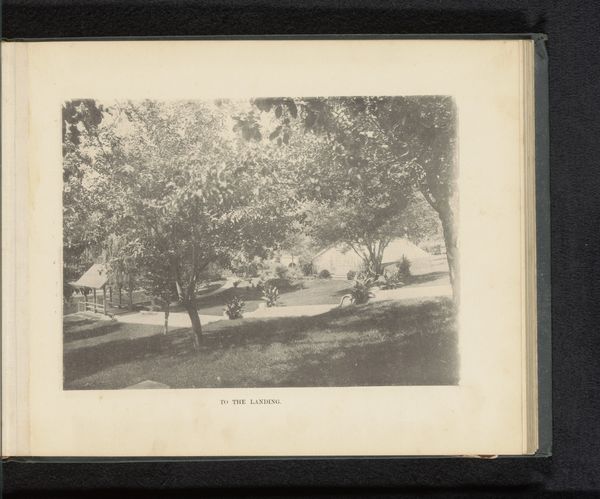
photography, gelatin-silver-print
#
landscape
#
photography
#
orientalism
#
gelatin-silver-print
Dimensions: height 230 mm, width 170 mm
Copyright: Rijks Museum: Open Domain
Curator: Before us, we have a photograph entitled "Oprijlaan met palmen en tuin met dieren," or "Driveway with palms and garden with animals," believed to be from somewhere between 1890 and 1910, by Otto Hisgen. It's a gelatin-silver print capturing a very composed, serene landscape. Editor: That title just rolls off the tongue, doesn't it? My first thought? It’s quiet. Terribly quiet. And a bit...colonial, somehow? The symmetry is nice, a little too perfect, almost like a stage set. Curator: The "Orientalism" tag that is associated with the image might suggest some awareness of colonial contexts at the time. Palms, of course, are rich symbols, laden with victory, peace, eternal life—think of ancient Rome, early Christian art. The garden, even more so, as Eden itself. Hisgen layers this visual language quite deliberately. Editor: Hmm, victory and peace overlooking what, exactly? I wonder who this idealized garden was for, or maybe who it kept out. And, are those two canines by the small shrubs to the left? Perhaps the photographer's beloved pet? Curator: Indeed, two small dogs rest within the immediate foreground. Dogs feature prominently across cultures and time periods—fidelity, guardianship, status… Their inclusion suggests an attempt to domesticate the scene. Though what appears on first impression idyllic may betray the presence of labor and exclusion behind it. Editor: The framing really boxes everything in. It's this picturesque view but it feels totally manufactured and disconnected from everything. But the quality is fantastic—I imagine what stories the photographer might be able to tell. Curator: The albumen print heightens that sense of both immediacy and distance. The Orientalist artistic movement played into idealized, sometimes exoticized, perspectives and understandings of foreign cultures and the aesthetic composition of those societies. Editor: I'll admit, those palm trees *are* rather striking. But I see this image and wonder, more than anything, about what isn’t being shown, all the messiness politely cropped out. Curator: Photography from this period offers us a fascinating, complex, if limited, visual record—offering access, while masking or muting alternate voices, too. Editor: It is so easy to get lost in translation isn’t it? This artwork will definitely sit with me a while!
Comments
No comments
Be the first to comment and join the conversation on the ultimate creative platform.
